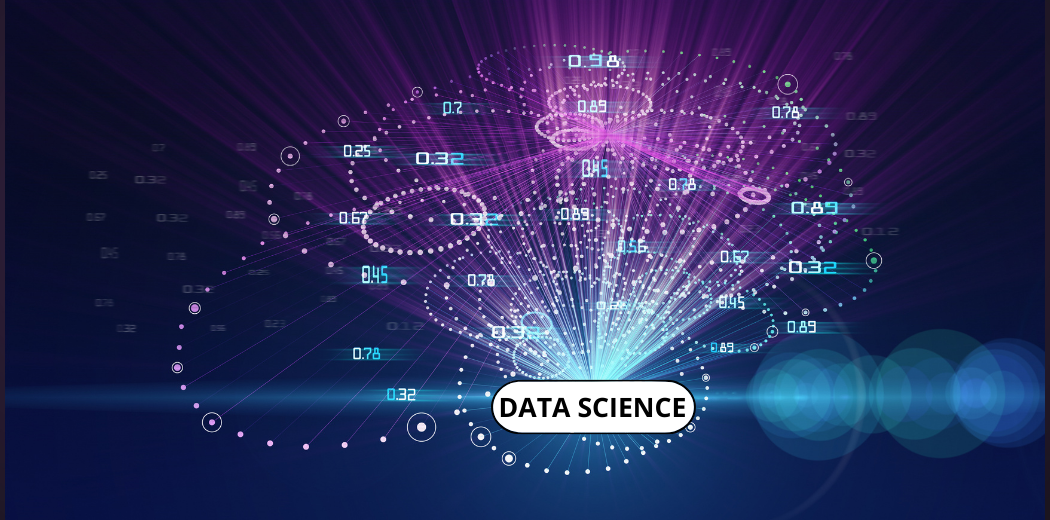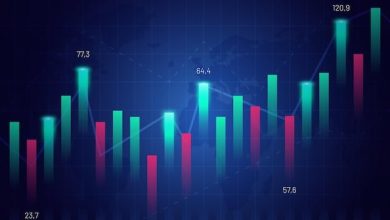Crypto Data Science 101: How Analysts Make Sense of the Blockchain


KEY TAKEAWAYS
- Crypto data science bridges blockchain technology with data analytics to interpret massive decentralized datasets.
- Blockchain data is transparent yet complex, requiring specialized tools for extraction and interpretation.
- Machine learning enhances fraud detection, market prediction, and smart contract analysis.
- Visualization tools like Tableau and Dune Analytics transform raw blockchain data into actionable insights.
- Key use cases include AML compliance, performance optimization, and tokenomics analysis.
- Challenges such as privacy, data volume, and regulatory changes demand adaptive, scalable approaches.
In the rapidly evolving world of cryptocurrencies and , data science has emerged as a critical discipline to understand, analyze, and extract actionable insights from massive amounts of blockchain data.
Blockchain records an immutable, transparent ledger of transactions across decentralized networks, producing vast volumes of complex data ripe for analysis.
Crypto data scientists, combining expertise in data analytics, machine learning, and blockchain fundamentals, unlock the hidden patterns, risks, and opportunities within this data.
This article provides a comprehensive introduction to crypto data science, illuminating how analysts make sense of blockchain data and contribute to the crypto ecosystem’s security, transparency, and innovation.
Understanding Blockchain Data
Blockchain is a decentralized digital ledger technology where transactions are recorded in blocks linked in chronological order through cryptographic hashes.
Each block contains a timestamp, transaction details, and a unique hash tying it to the previous block, creating a secure and immutable chain of records. This ensures data transparency and tamper-resistance, a vital foundation for trust in cryptocurrencies and decentralized applications.
From a data science perspective, the blockchain provides a large-scale, public dataset of transactional information, addresses, and smart contract interactions. However, this data is semi-structured and complex, with inherent characteristics that distinguish it from traditional databases.
For example, blockchain data is decentralized across many nodes, involves cryptographic elements, and continuously grows as new blocks join the chain. Analysts must grasp blockchain mechanisms such as (Proof of Work, Proof of Stake) and cryptographic signatures to interpret data properly.
The Role of Data Science in Blockchain
Data science in the blockchain realm encompasses extracting, cleaning, and analyzing blockchain data to reveal trends, detect fraud, optimize performance, and support decision-making. Key areas where data science is applied include:
- Transaction Analysis and Fraud Detection: Using machine learning and statistical models, analysts detect anomalous transaction patterns indicative of fraud, money laundering, or illicit activities. This is essential for regulatory compliance and network integrity.
- Smart Contract Auditing and Optimization: Data science methods assist audit decentralized applications (DApps) by analyzing smart contract code behavior and performance, identifying vulnerabilities, and ensuring efficient execution.
- Network Performance and Scalability: Analysts model blockchain throughput, latency, and bottlenecks. Data-driven answers such as layer-2 scaling and sharding are informed by these performance analyses to enhance network scalability.
- Tokenomics and Incentive Design: By applying behavioral analytics and economic modeling, crypto data scientists optimize token incentive systems to promote network security, decentralization, and sustainable growth.
- Data Security and Collaboration: Blockchain’s decentralized and encrypted nature heightens data security, enabling securer data sharing and collaboration among stakeholders while protecting ownership and privacy.
Tools and Techniques Used by Crypto Data Scientists
Data scientists working with blockchain utilize a range of specialized tools and techniques, including:
- Data Extraction and Parsing: Public blockchain data is extracted using APIs and . Parsing the data requires an understanding of blockchain-specific data formats, transaction types, and cryptographic elements.
- Statistical Analysis and Visualization: Visualization platforms and libraries (e.g., D3.js, Tableau, and Python’s Matplotlib) assist portray transaction flows, network activity, and market trends effectively.
- Machine Learning and Anomaly Detection: Models such as clustering and classification algorithms identify unusual transaction patterns or predict future network states based on historical data.
- Graph Analytics: Because blockchain transactions form networks of addresses and entities, graph theory is applied to map connections, detect centralized actors (“whales”), and understand money flows.
- Programming and Blockchain Expertise: Analysts typically employ Python, SQL, and blockchain-specific programming languages or frameworks (e.g., Solidity for smart contracts) to manipulate data and develop analytics pipelines.
Case Studies: Applications of Crypto Data Science
Here’s how real-world case studies showcase the power of crypto data science, from market prediction to fraud detection and beyond.
1. Trading and Investment Insights
Traders use data science to track , platform inflows/outflows, and miner tradeing behavior. All of which can hint at short-term market direction. Quantitative hedge funds often build automated strategies using these on-chain indicators.
2. Fraud Detection and Compliance
Regulators and platforms use blockchain forensics to trace stolen or laundered funds. Data science models identify “tainted” coins or addresses connected to dark web activity, assisting enforce anti-money-laundering () standards.
3. Market Research and Trend Forecasting
Projects use on-chain analytics to measure community engagement, token distribution, and usage growth. Data scientists can forecast project success by comparing activity patterns with earlier, successful tokens.
4. Network Health Monitoring
For proof-of-work networks like , data science tracks hash rate and miner concentration to assess decentralization and resilience. For proof-of-stake systems, analysts monitor Block confirmer distribution and staking behavior to ensure fair network security.
Challenges in Crypto Data Science
Despite its potential, blockchain analytics faces real obstacles:
- Data Volume: Blockchains generate terabytes of information, and processing it efficiently is resource-intensive.
- Pseudonymity: Without clear user identities, interpreting behavior often involves educated guesses.
- Cross-Chain Complexity: Assets move across multiple blockchains, complicating analysis and tracking.
- Rapid Evolution: Protocols, tokens, and standards evolve rapidly, forcing analysts to adapt continuously.
To overcome these, analysts rely on constant model retraining, graph databases, and partnerships with blockchain indexers that structure raw data into usable formats.
Skills Every Crypto Data Scientist Needs
Here’s how to identify and develop the essential skills every crypto data scientist needs to analyze trends, build models, and make smarter blockchain-driven decisions.
- Programming: Python, R, or SQL for data manipulation and visualization.
- Blockchain Fundamentals: Understanding transactions, consensus mechanisms, and smart contracts.
- Statistics and Machine Learning: Building predictive and classification models.
- Data Visualization: Presenting insights through dashboards (Tableau, Power BI, or Dune).
- Security Awareness: Recognizing exploit patterns and smart contract vulnerabilities.
How Data Science Powers the Crypto Revolution
Crypto data science is a dynamic interdisciplinary field crucial to unlocking the full potential of blockchain technology. By applying data science principles to the vast, complex blockchain datasets, analysts enhance security, transparency, scalability, and market understanding.
As blockchain ecosystems become increasingly sophisticated, the fusion of data science and crypto promises to drive innovation, foster trust, and shape the future of decentralized finance and beyond. Understanding the fundamentals of crypto data science equips investors, developers, and policymakers to navigate the blockchain revolution with greater confidence and insight.
This primer outlines the foundational landscape for anyone interested in how analysts make sense of the blockchain, transforming raw crypto data into actionable knowledge.
FAQ
What is crypto data science?
Crypto data science is the application of data analytics, machine learning, and statistical modeling to blockchain data. It assists uncover patterns, detect fraud, and optimize blockchain network performance.
Why is data science significant in blockchain technology?
Data science assists make sense of blockchain’s massive datasets, enabling better security, transparency, and decision-making in crypto ecosystems.
What kind of data exists on the blockchain?
Blockchain data includes transactions, wallet addresses, timestamps, smart contract interactions, and consensus details. These elements form the foundation for analytics.
How do data scientists analyze blockchain data?
They extract and parse blockchain data through APIs, apply statistical methods and machine learning models, and visualize trends to detect anomalies or predict market behavior.
What are some real-world applications of crypto data science?
Applications include fraud detection, market trend forecasting, smart contract auditing, tokenomics optimization, and monitoring blockchain network health.
What challenges do crypto data scientists face?
Key challenges include handling vast and complex data, ensuring privacy compliance, adapting to new blockchain protocols, and managing pseudonymous transactions.
What skills are essential for a crypto data scientist?
They need proficiency in programming (Python, SQL, R), blockchain fundamentals, data visualization, machine learning, and cybersecurity awareness.





